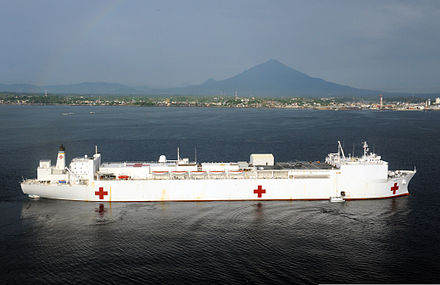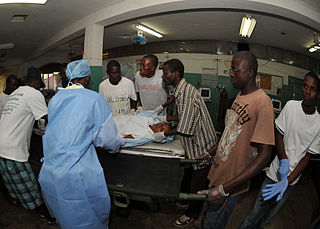Primary Health Care, or PHC, refers to "essential health care" that is based on scientifically sound and socially acceptable methods and technology, which make universal health care accessible to all individuals and families in a community. It is through their full participation and at a cost that the community and the country can afford to maintain at every stage of their development in the spirit of self-reliance and self-determination. [1] In other words, PHC is an approach to health beyond the traditional health care system that focuses on health equity-producing social policy. [2] [3] PHC includes all areas that play a role in health, such as access to health services, environment and lifestyle. [4] Thus, primary healthcare and public health measures, taken together, may be considered as the cornerstones of universal health systems. [5] The World Health Organization, or WHO, elaborates on the goals of PHC as defined by three major categories, "empowering people and communities, multisectoral policy and action; and primary care and essential public health functions as the core of integrated health services[1]." Based on these definitions, PHC can not only help an individual after being diagnosed with a disease or disorder, but actively prevent such issues by understanding the individual as a whole.

Health care, health-care, or healthcare is the maintenance or improvement of health via the prevention, diagnosis, and treatment of disease, illness, injury, and other physical and mental impairments in people. Health care is delivered by health professionals in allied health fields. Physicians and physician associates are a part of these health professionals. Dentistry, midwifery, nursing, medicine, optometry, audiology, pharmacy, psychology, occupational therapy, physical therapy and other health professions are all part of health care. It includes work done in providing primary care, secondary care, and tertiary care, as well as in public health.
Universal healthcare is a health care system that provides health care and financial protection to all residents of a particular country or region. It is organized around providing a specified package of benefits to all members of a society with the end goal of providing financial risk protection, improved access to health services, and improved health outcomes.
Health equity synonymous with health disparity refers to the study and causes of differences in the quality of health and healthcare across different populations. Health equity is different from health equality, as it refers only to the absence of disparities in controllable or remediable aspects of health. It is not possible to work towards complete equality in health, as there are some factors of health that are beyond human influence. Inequity implies some kinds of social injustice. Thus, if one population dies younger than another because of genetic differences, a non-remediable/controllable factor, we tend to say that there is a health inequality. On the other hand, if a population has a lower life expectancy due to lack of access to medications, the situation would be classified as a health inequity. These inequities may include differences in the "presence of disease, health outcomes, or access to health care" between populations with a different race, ethnicity, sexual orientation or socioeconomic status.
Contents
- Goals and principles
- Approaches
- Selective Primary Health Care
- GOBI and GOBI-FFF
- PHC and population aging
- PHC and mental health
- Background and controversies
- Barefoot Doctors
- Criticisms
- See also
- References
- Further reading
- External links
This ideal model of healthcare was adopted in the declaration of the International Conference on Primary Health Care held in Alma Ata, Kazakhstan in 1978 (known as the "Alma Ata Declaration"), and became a core concept of the World Health Organization's goal of Health for all . [6] The Alma-Ata Conference mobilized a "Primary Health Care movement" of professionals and institutions, governments and civil society organizations, researchers and grassroots organizations that undertook to tackle the "politically, socially and economically unacceptable" health inequalities in all countries. There were many factors that inspired PHC; a prominent example is the Barefoot Doctors of China. [4] [7] [8]
The Declaration of Alma-Ata was adopted at the International Conference on Primary Health Care (PHC), Almaty, Kazakhstan, 6–12 September 1978. It expressed the need for urgent action by all governments, all health and development workers, and the world community to protect and promote the health of all people. It was the first international declaration underlining the importance of primary health care. The primary health care approach has since then been accepted by member countries of the World Health Organization (WHO) as the key to achieving the goal of "Health For All" but only in developing countries at first. This applied to all other countries five years later. The Alma-Ata Declaration of 1978 emerged as a major milestone of the twentieth century in the field of public health, and it identified primary health care as the key to the attainment of the goal of "Health for All" around the globe.

The World Health Organization (WHO) is a specialized agency of the United Nations that is concerned with international public health. It was established on 7 April 1948, and is headquartered in Geneva, Switzerland. The WHO is a member of the United Nations Development Group. Its predecessor, the Health Organization, was an agency of the League of Nations.










